Our theme for today is groups of three. These three girls were prizewinners at Mrs Burnell’s garden party.in Castlemaine, Central Victoria, on Nov 16th, 1940 . It was part of the way into World War II, when raising money for war effort charities such as the Comfort Fund, Red Cross or Bundles for Britain was the usual reason for holding a money-raising event. It was such a patriotic time, not so long after the last coronation and a new king, with the country at war. Best dresses and hats were brought out for this special occasion, and the pram reflects the feeling at the time with its crown, its Australian flags and red, white and blue bunting.. Crepe paper was the standard material for these creations, willingly constructed by parents. . And the special doll Elizabeth was named ,of course, after Princess Elizabeth.
A typical pretty, peaceful, family album picture of the time. But it is what the picture doesn’t show which makes it interesting to me. When the two girls on the right got out of bed that morning they had probably been primed to wish their mother a happy birthday. It was her forty-first birthday. But they would have been blissfully unaware of the reaction of their parents when they opened their morning newspaper of choice, the Argus, from Melbourne, and its news of the war from England. .Two nights before the worst bombing raid on the city of Coventry was carried out. Over 4000 homes were destroyed and over 500 people killed. Coventry was the home of the children’s 90 year old maternal great grandmother. I don’t know long it was to be before the Australian family found out that she was alive and well and was to live for another two years. Then on the night of the garden party the Royal Air Force retaliated by bombing Hamburg.
But the children weren’t aware of this.
Also on the other side of the world and on that same day the Warsaw ghetto was closed to the outside world by the Nazis. In the previous month the Jewish people of Warsaw, about one third of the total population , had been rounded up by the Nazis and confined to a small are of the city, These 400,000 people were held behind three metre high walls topped with barbed wire. And on this fatal day the gap was closed. Thirty percent of the population crowded into two and a half percent of the area.
But the children in Castlemaine weren’t aware of this
or of a group of three chikdren in the ghetto in Warsaw,
The garden party was held at the home of Mr and Mrs Burnell, a beautiful home with a large front lawn suitable for all the stalls and competitions that go with a fund-raising garden party. It was directly across the road from Thompson’s Englineering & Pipe Works, established in 1875, where Mr Burnell was the General Manager. He had won the MC during WorldWar I. Thompson’s was the most important business in Castlemaine, commonly known as Thompson’s Foundry and was spread out alongside the main railway line from Melbourne to Bendigo, an ideal position for transporting the heavy goods which it made, a wide range of steam-engines, boilers, mining machinery, railway equipment and centrifugal pumps. But during World War II they made artillery and tank guns, marine engines, circulating pumps and other heavy forging and foundry work.
Making guns for war, what the children didn’t know.
The eldest girl in the photos remembers the workmen on their pushbikes, four and five abreast, sweeping up and down the Main Street on their way to and from work. With such a large work force the foundry had a piercing whistle which screamed out at 7.00am, 7.20am and 7.30am. There was no excuse for being late for work and the whole town and beyond had its own non-negotiable alarm clock.
Small towns are such a web of people and places. The mother of the two girls on the right had originally come to Castlemaine with her parents as from 1923 to 1928 her father worked in the office at Thompson’s and was Bandmaster of Thompson’s Foundry Band. This is the same man who brought a book on Shakespeare with him when he came to Australia. The man really did have itchy feet and jumped as bandmaster from one small country town to another several times. The Foundry has had its own brass band since 1887 and 24 members of the band served in World War I, six of whom were killed. I have no figures for the Second World War.
When is the world going to learn .
And for more interesting stories about groups of three, click on the links in Sepia Saturday.

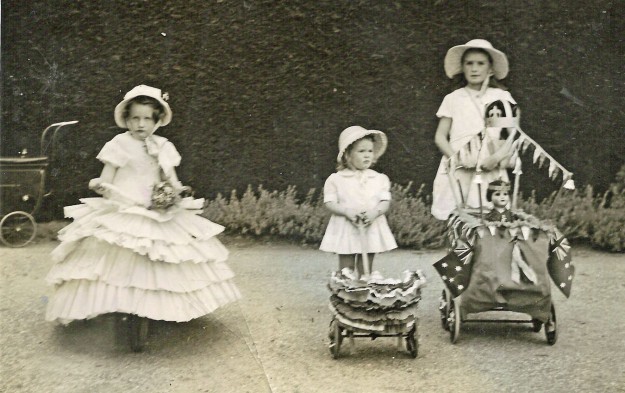
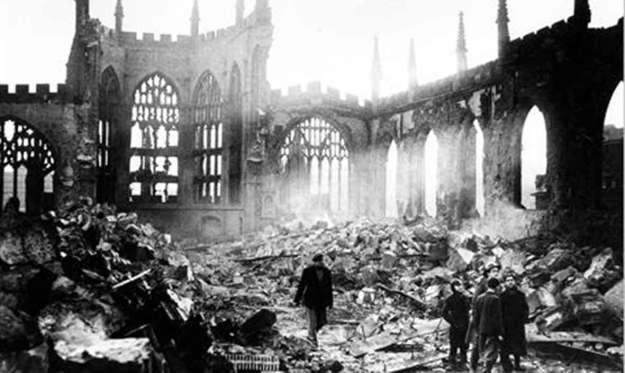
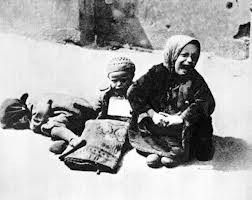
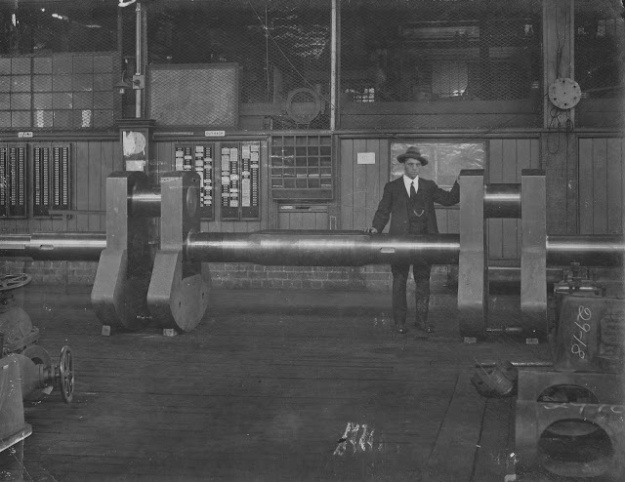

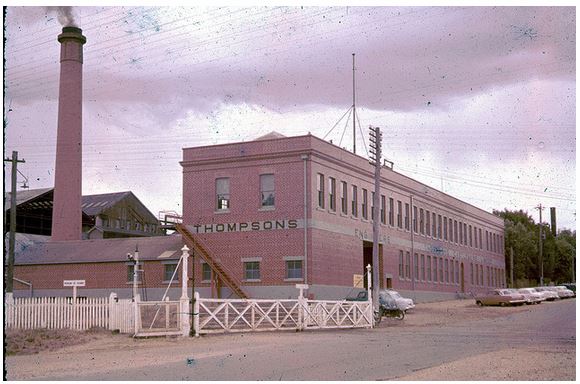
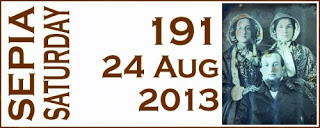
This is a wonderful essay B – such a thoughtful study of a simple snapshot.
LikeLike
My goodness, that was quick ! Thanks. I’m still fixing up bits and pieces that I’d overlooked !
LikeLike
Yes, I totally agree with Lorraine’s comment. Of course there will always be people innocently and happily enjoying themselves in one part of the world, especially children, while others are suffering elsewhere. Did you know that the first Allied shots of both World War I and World War 2 were both fired from Port Phillip defences at the Point on ships that were attempting to either leave or enter the bay, on 5 August 1914 and 4 September 1939 respectively? We saw the two gun barrels and a commemorative plaque down at Port Nepean National Park just last week.
LikeLike
Thanks. I had forgottne about that. It’s so hard for us to imagine that happening. I hope they don’t let the developers into that park. I think I saw something to that effect earlier in the year.
LikeLike
What a great spin – you’re right, the children didn’t know, and what a good thing that was – they could still be children, unlike the poor children in the ghetto or hiding in bomb shelters.
LikeLike
There were other ghetto photos which I liked but that particular photo wasn’t quite as confronting as some of the others, I hope some people will google Warsaw ghetto or Coventry and spend just a few minutes refreshing their knowledge of history.
LikeLike
I was surprised by how much history could be connected to the photo by researching the date.
LikeLike
I was lucky in that the date turned up two such major news items. Iguess most days would be much more bland news-wise.
LikeLike
The way you have crafted this post is very much to be admired. Unfortunately these days yje children too often know what is going on.
LikeLike
That’s all too true, Bob!
LikeLike
It’s a difficult line to draw, how much to tell children. But I think children usually only absorb as much as they’re capable of understanding
LikeLike
I really appreciate the angle you took on this – something we don’t really think about – the obliviousness of childhood. It’s only when they grow up that they realize the importance of the things of which they were unaware.
I read a very good novel by a Canadian author, that takes place during the bombing of Coventry. It might interest you: It is aptly titled, “Coventry”.
LikeLike
Oops! Forgot to tell you her name. It is Helen Humphreys.
LikeLike
Thanks for that. I just checked the library and they have a copy but it will have to wait a while as I have too many books out at the moment, including two which I have just discovered are badly overdue. Shame on me. thanks for the tip.
LikeLike
It was an interesting thread through and through. Your words (and now mine) will continue with me for some time. When will we learn?
LikeLike
I’m glad ou agree with em. when will we learn ?
LikeLike
Very cleverly done. I really like the way you tied in the actual dates in history to the photos.
LikeLike
I was lucky that I had the date the photo was taken.
LikeLike
I was struck with how beautiful the Coventry Cathedral was — even in ruins — and devasted by the Warsaw ghetto children of three. Excellent work.
LikeLike
That photograph of a man standing next to a huge crankshaft reminds of that famous image of Isambard Kingdom Brunel posing by the launching chains of the Great Eastern in 1857. Great story.
LikeLike
Oh yes, you are so right, when is the world going to learn. That first photo is just precious, so much going on in that, they were enjoying life, and being kept in the dark from the horrible things going on, so much the better for them.
LikeLike
The photos from WWII are so sad. We humans either don’t know history or think it’s inconsequential. I hate what’s happening now in Egypt and Syria. About two years ago a survivor of the Holocaust spoke at a nearby town’s school. I was privileged to hear him, talk to him at the reception and bought his book. More people need to hear the message from those who are fortunate to survive wars and get a close-up and personal idea of what war is really like.
On the more positive side, what a precious trio of girls at a garden party!
LikeLike
How important is is to protect childhood innocence. Great post.
LikeLike
A really enjoyable and thought provoking post.
Well Done.
LikeLike
When shall we learn?
Probably never…
It seems the big lesson[s] from the 20th century have served no purpose
as we seem just as eager to deploy and bombard each other…
😦
HUGZ
LikeLike
That shot of the ruined Coventry cathedral brought back memories of my father. Born and raised there, he came to Oz as a young man to join his mother. He became a “real” Aussie and spoke in the idiom and with the cadence of the men around him – think slower than nowadays more like Chips Rafferty. The only time I ever saw him cry – and he was a tough old so-and-so – was that day you mentioned when Melburnians opened their morning papers to read about the bombing of Coventry. I believe he donated towards the fund to rebuild the cathedral after WW2. They did a good job, too, incorporating part of the remaining structure.
LikeLike